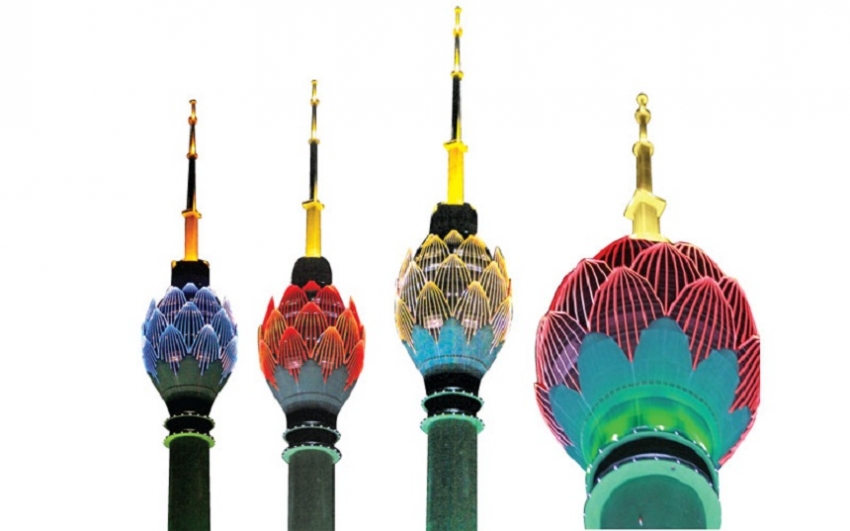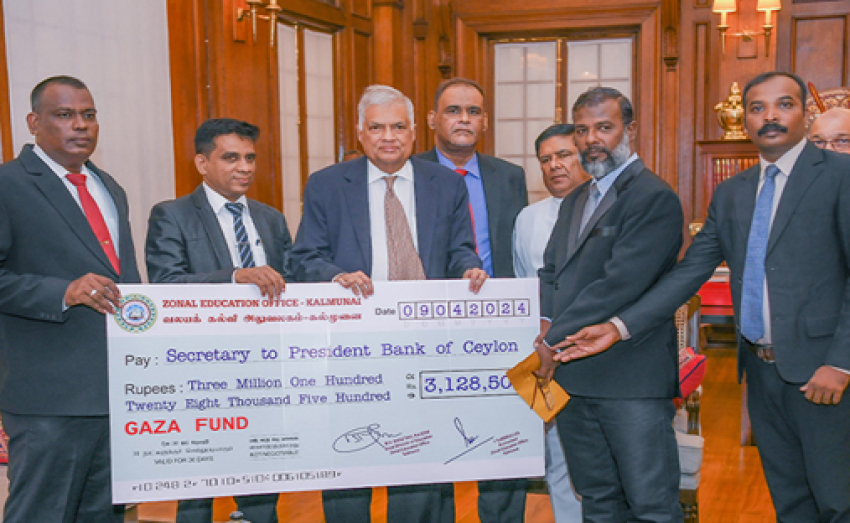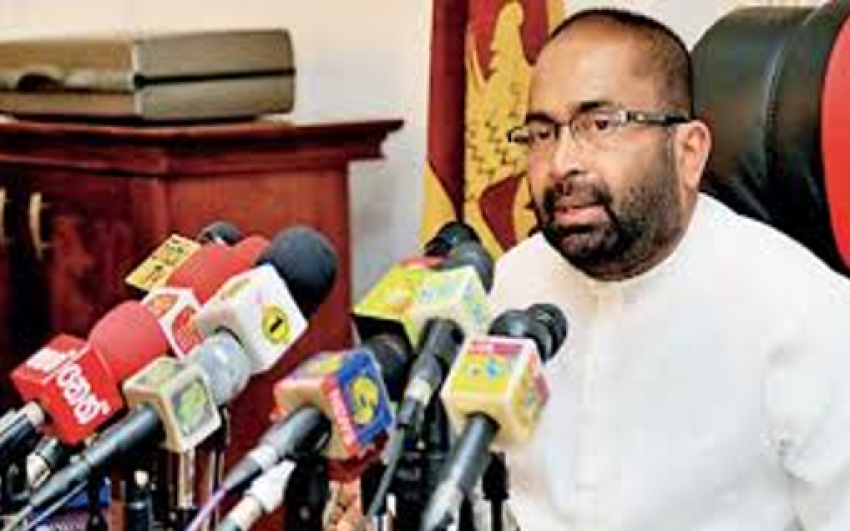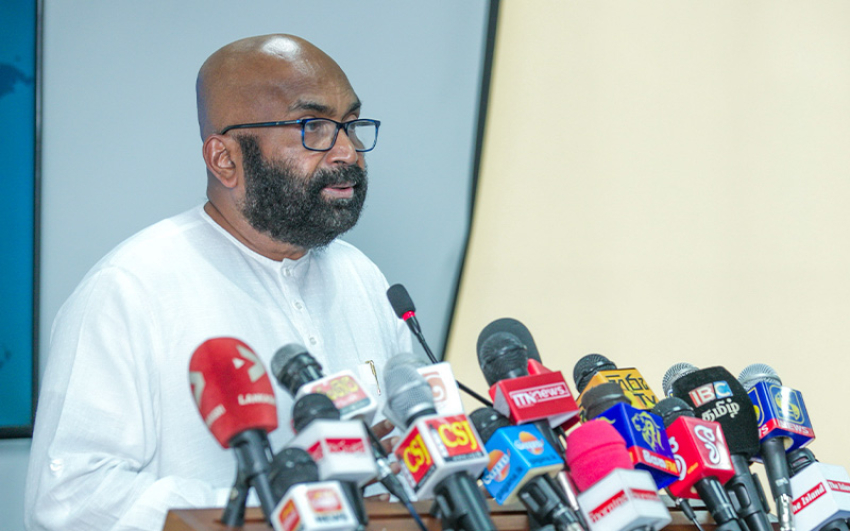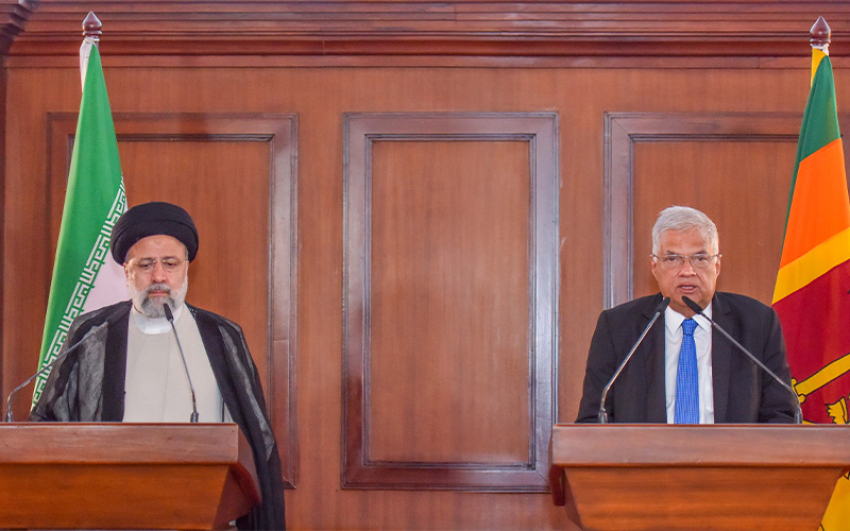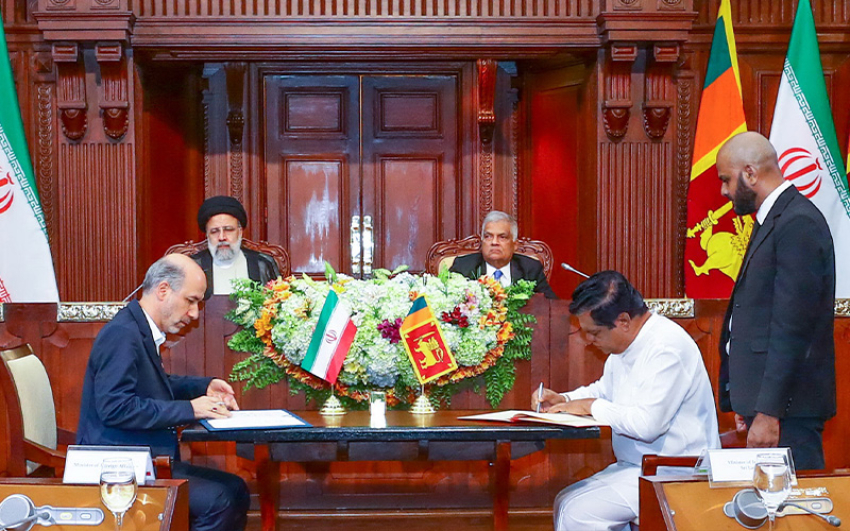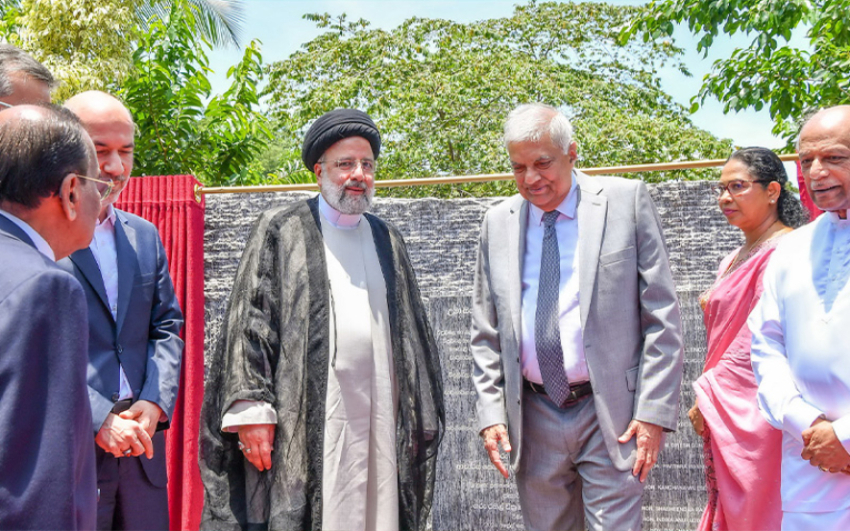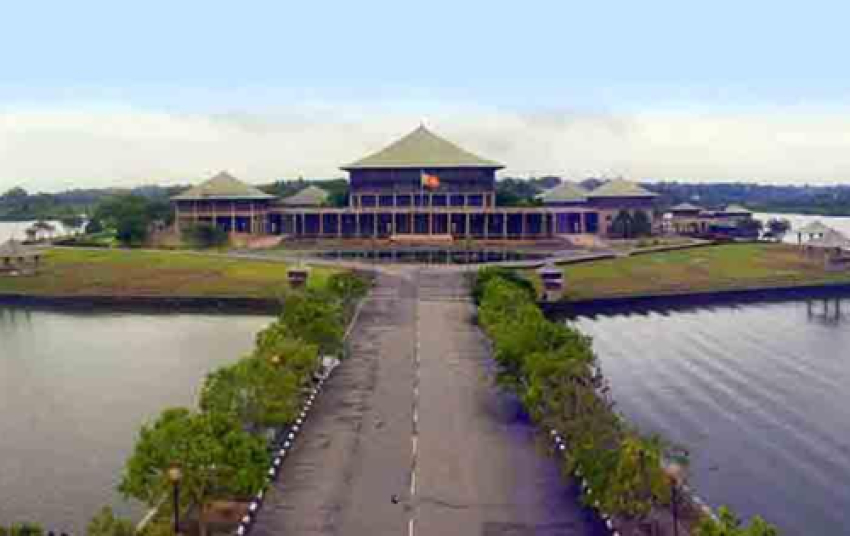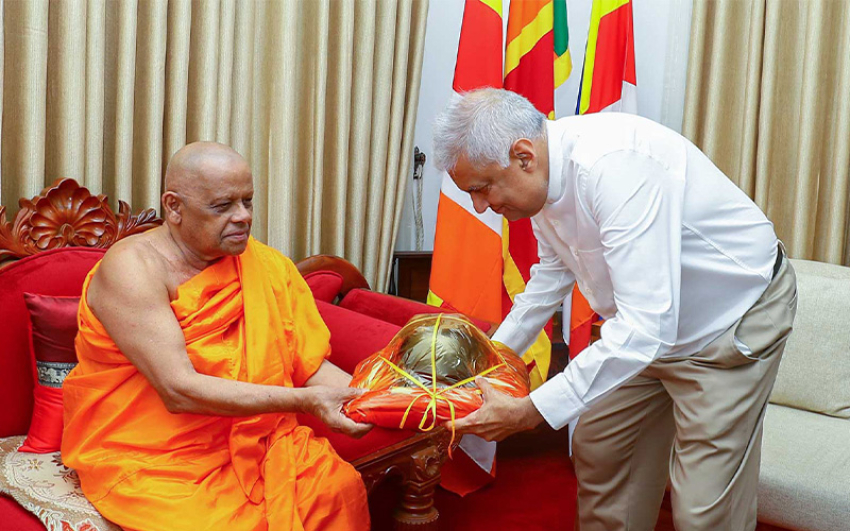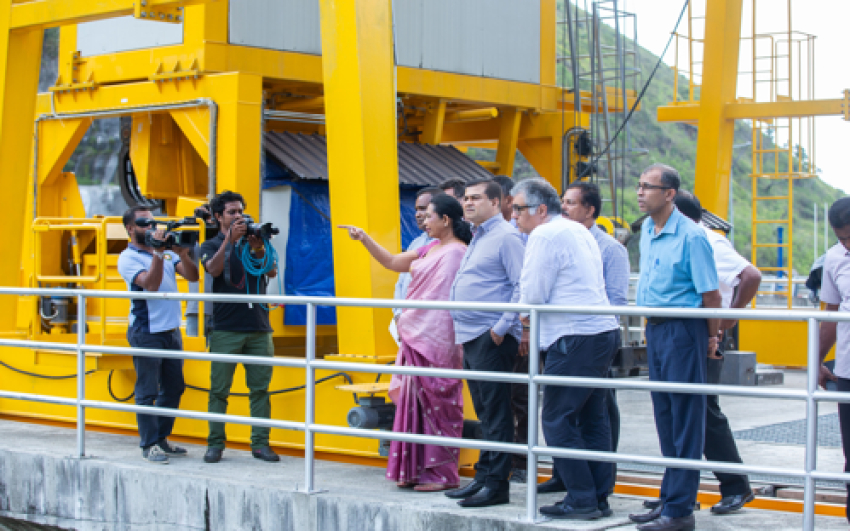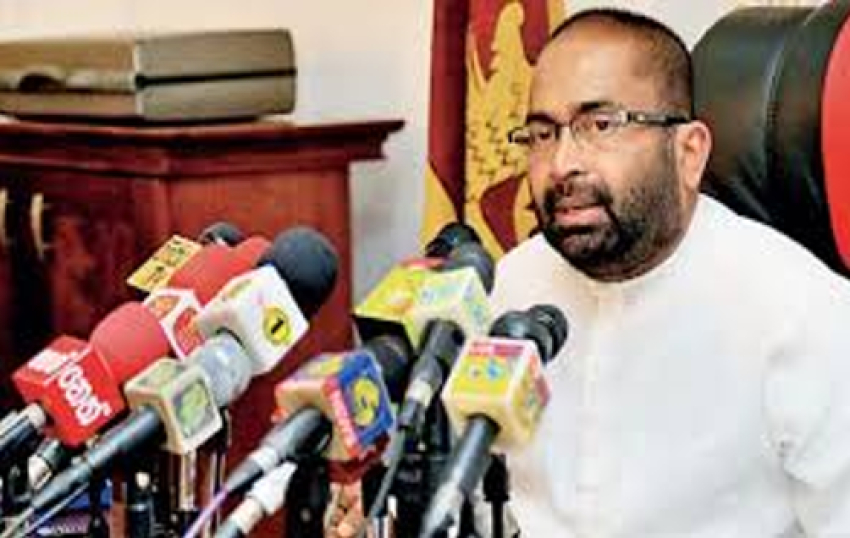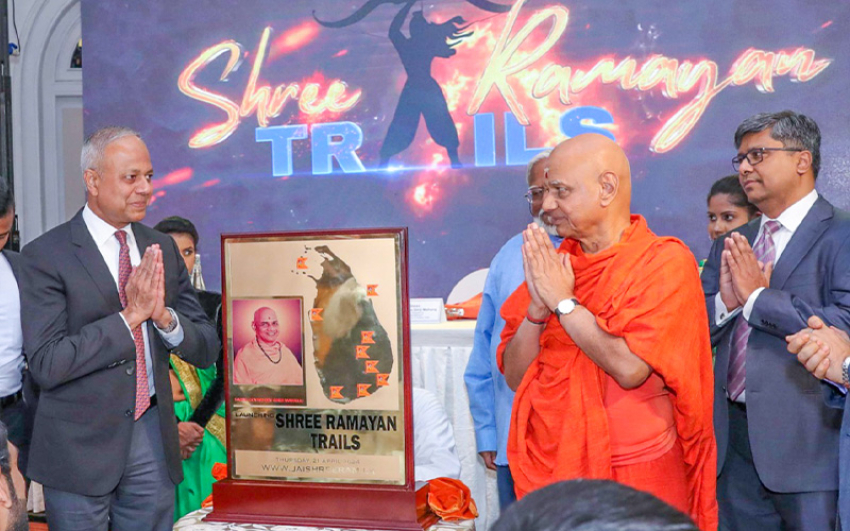Towering at an imposing height of 350 metres, the highest self-supported structure in South Asia, the Lotus Tower or Nelum Kuluna will now enable local and foreign visitors to enjoy panoramic views of our paradise island from today.President Maithripala Sirisena will open Lotus Tower in Colombo today (16) at the inauguration ceremony which will be held at 5.00 pm with the expected participation of Prime Minister Ranil Wickremesinghe and former President and Opposition Leader Mahinda Rajapaksa. The Telecommunications Regulatory Commission of Sri Lanka (TRC) has also invited all Parliamentarians among other dignitaries, to the inauguration.
Among other features, the tower comprises a telecommunications museum, a revolving restaurant, a hotel, an auditorium, a conference hall, a ballroom and an observation deck.The construction of the 350-metre-high Multi-Functional Transmission Television and Telecommunications Tower was earlier scheduled to be completed in March 2015. Today, the Lotus Tower finally blossoms today after a delay of four years.
A sum of US$ 104 million has been spent for the construction of the tower, of which 80 percent of the cost has been borne by China Exim Bank. The Telecommunications Regulatory Commission of Sri Lanka (TRC), China National Electronics Import and Export Corporation (CEIEC) and Aerospace Long-March International Trade Company Limited (ALIT) signed the contract for the project in 2012.
Locally designed
The Faculty of Architecture of University of Moratuwa was given the unique opportunity to provide professional advice on design for this project. The Faculty of Architecture also provided professional advice on cost planning and cost control of the project. The university team of consultants included Emeritus Professor Nimal de Silva, Senior Professor Samitha Manawadu and Professor Chitra Weddikkara, the TRC said.
Senior Professor attached to the Faculty of Architecture of the University of Moratuwa Professor Samitha Manawadu, who is the Coordinating Consultant and Team Leader of the Lotus Tower project, told the Daily News: “Lotus Tower is the highest free-standing multi-functional transmission television and telecommunications tower in South Asia. There is a military antenna in India that is higher than Lotus Tower. But there is nothing like Lotus Tower, which is the tallest self-supported structure in the whole of South Asia.”
Project cost
Speaking of the total value of the project, Professor Manawadu said, “US$ 104 million was the initial value calculated upon which we entered into a contract. But now, the total cost of this project has increased. Nevertheless, since we entered into the contract with a fixed fee lump sum, the project is valued to be US$ 104 million and that value cannot be changed. There were many political interruptions that hindered the construction activities of Lotus Tower for four years.”
“Technically, the contractor should be able to claim a payment for these delays. However, the nature of the contract we had entered into did not give space for that. Considering these factors, we can safely say that the whole value of this project should be around US$ 200 million, and if we add the value of the land, it should be worth US$ 300 million,” Professor Manawadu said.
“In 12 years’ time, we should be able to recover the full cost of the project, and as forecast, after 14 years, this project should generate profits. This forecast was projected when the tower only facilitated conference halls. Now that the project has shopping malls included, I believe Lotus Tower would be able to make profits before the period of time we initially forecast. A well-designed business plan is crucial to achieve that,” Manawadu added.
Recently, Cabinet approval was granted to set up a state institution to handle the administration activities of the tower. Prof. Manawadu said that the state body would function under the guidance of the Finance Ministry. The state body has been established as a precursor to the business plan introduced for Lotus Tower by the TRC, Professor Manawadu said.
“This state body will follow the nature of a state institution such as SriLankan Airlines. This state body will promote business for Lotus Tower both locally and internationally. They will be responsible for finding investors, calling for tenders, evaluating them and implementation. The process to start the commercial activities of the tower would take another month or two,” he said.
A report issued by the Auditor General’s Department recently caught media attention as it claimed that the government has incurred a loss of Rs. 5,475 million due to the delay in construction of the project.
Commenting on these media reports, Professor Manawadu said that in fact it was not a “loss” that has been incurred, but an “opportunity cost.”
“It seems that this so-called loss calculation was carried out based on the financial feasibility report prepared by us which predicted the annual income of Lotus Tower for 15 years. It seems that the projected annual income has been multiplied by the number of years the project was delayed, meaning from 2015 to 2019, and the conclusion arrived at is that there has been a loss. One must understand that this sum is not a physical cost but an opportunity cost. Sadly, the reports spread across the media but no one bothered to use the correct terms,” Professor Manawadu said.
A unique tower
According to the TRC, “Lotus Tower is a unique construction in the field of electronic communication in Sri Lanka. The base of this unique design consists of four storeys; the basement is reserved for the main kitchen, air conditioning, electrical operating systems and elevator systems. The ground floor is the surface level of the tower building. This level is completely reserved for entry of visitors, visitor-waiting facilities, VIP entrances, VIP waiting points, a shopping mall, and information counters. The first floor is dedicated to a shopping mall. The second floor is reserved for a shopping mall and an area for VIP access. The third floor is the roof of the tower. This area can be used for holding open shows, meetings and events.”
Tower House
The section known as the Tower House is in the shape of a lotus. The colours of the lotus petals change periodically. With a height of 45 metres from 215 to 260 metres, this section has nine levels. The first and second levels are exclusively for radio and television transmissions; the first level is exclusively for radio transmission, while the second level is dedicated to television transmission.
The third and fourth levels will function as event halls and dining rooms. The third level lounge has space for 250 guests. The fourth level is also a reception hall, accommodating 280 guests. The two halls on the different floors are connected by staircases.
The fifth level is a revolving restaurant. Up to 200 guests can use this facility simultaneously, and the cafeteria takes 90 minutes to rotate one circle. This revolving restaurant and the two halls are also linked by a stairway.
The sixth level has eight luxury rooms designed for state guests. These rooms are well equipped with all amenities.
The seventh level is an outdoor observation deck, giving people the opportunity to view the city and its surroundings at a height of 245 metres. This will be a unique experience for the people, the TRC media unit said.
The eighth and ninth levels are dedicated to various services including elevators and air conditioning.
Antenna Mast
The Antenna Mast at the top of the tower is the main feature of Lotus Tower. The entire length of the Antenna Mast is about 90 metres and it is a heavy steel structure. It has been designed to accommodate 20 television broadcasting companies, 50 FM broadcasters and telecom operators.
University don sums up
Professor Manawadu also said that Lotus Tower has the fastest elevators in Sri Lanka. “There are five elevators operating in the tower. Three of these elevators function at the speed of seven metres per second, which means a person can reach the top of the tower within 40 seconds. They are the fastest elevators in Sri Lanka. Earlier, the fastest elevators were at the World Trade Centre which covered three metres per second. Our elevators run at more than twice that speed,” he said.
Professor Manawadu said, “This is one of the largest projects to which I have contributed. But I did not do this individually. The University of Moratuwa was given this great opportunity to provide professional advice on design for this project. We are very proud of our contribution to this project. We are also extremely happy and humbled by it. Most importantly, when foreign countries carry out a project like this, they seek other foreign experts to run it. They will usually select a world-famous architect for such a project. I have to commend former President Mahinda Rajapaksa and his government for giving us the opportunity to contribute to this project.”
“We took the technology from foreign experts and transferred it to the local construction industry. Our team had about 70 consultants including senior lecturers and we trained about 60 graduate engineers. Through this project, we were able to contribute immensely to the construction industry in Sri Lanka. I did not undertake this project in my private capacity, but in my capacity as Senior Professor attached to the Faculty of Architecture of the University of Moratuwa,” he said.

